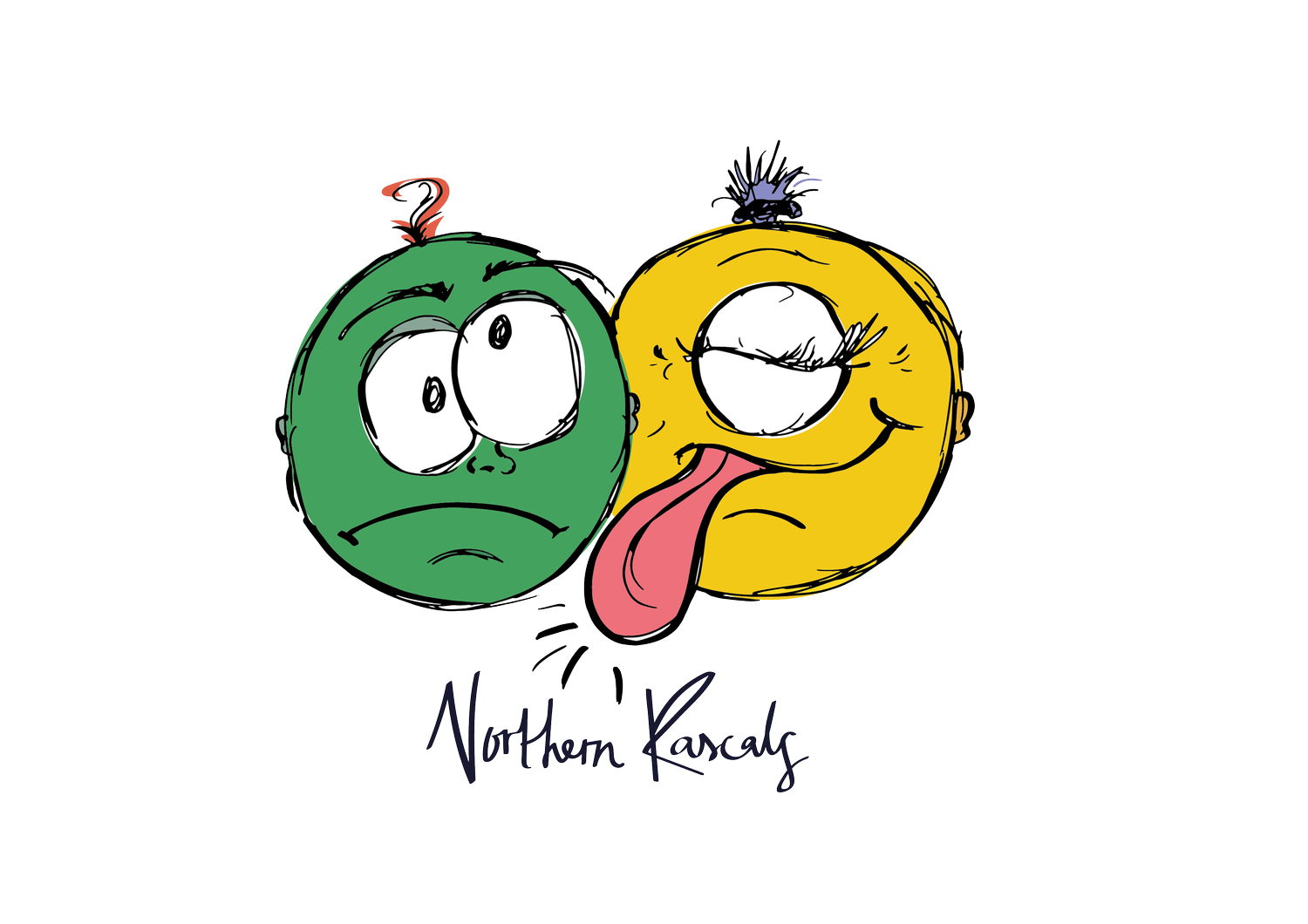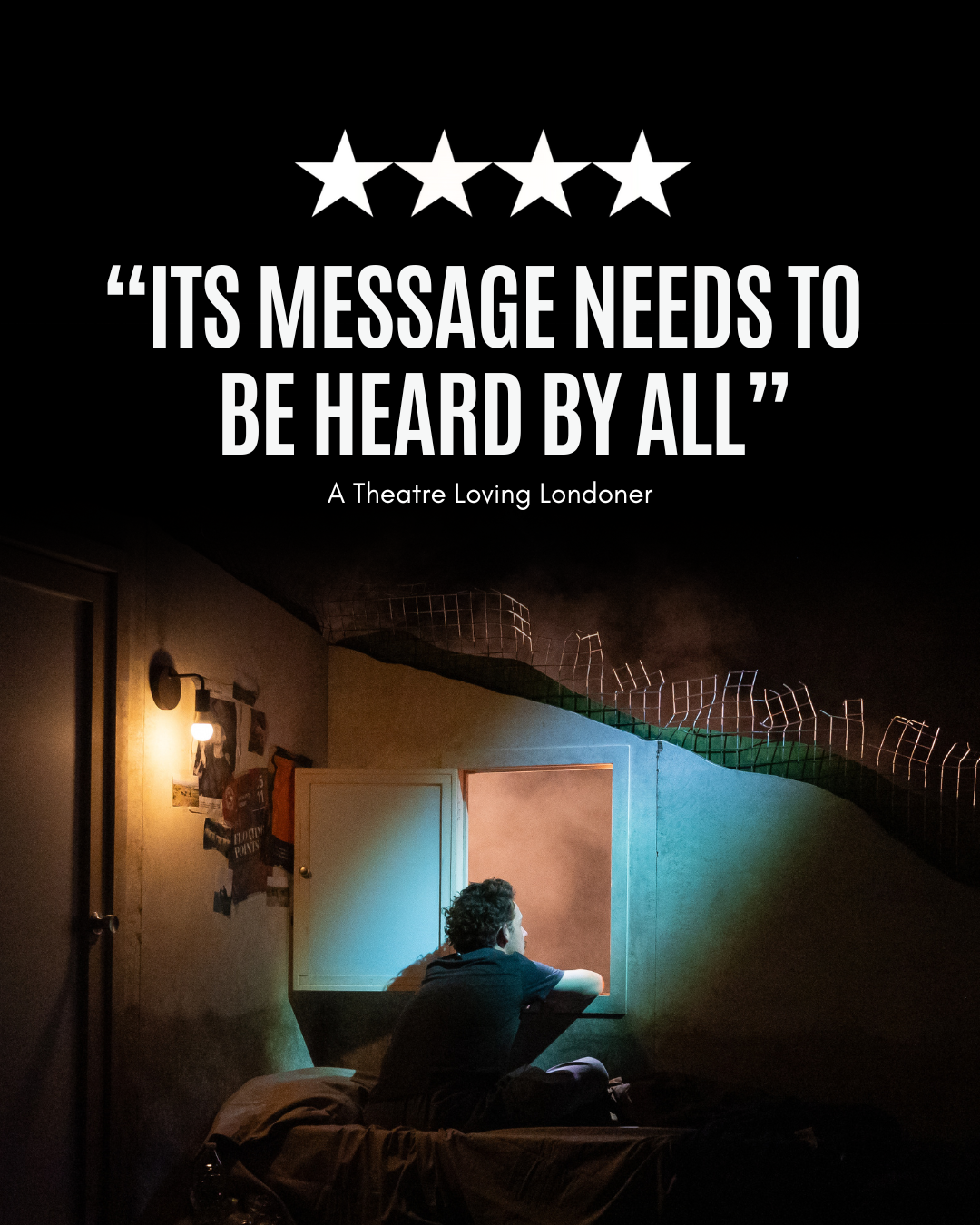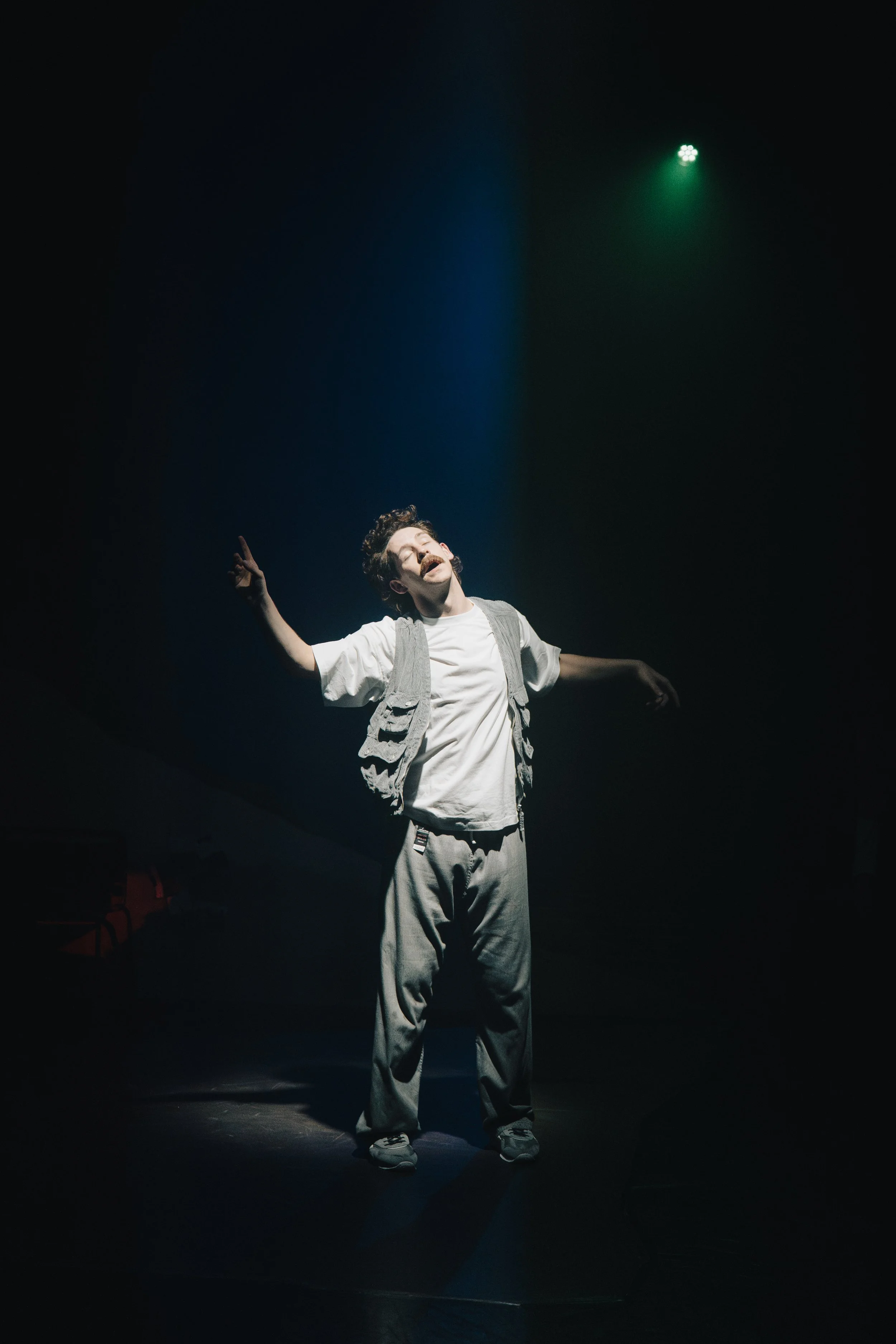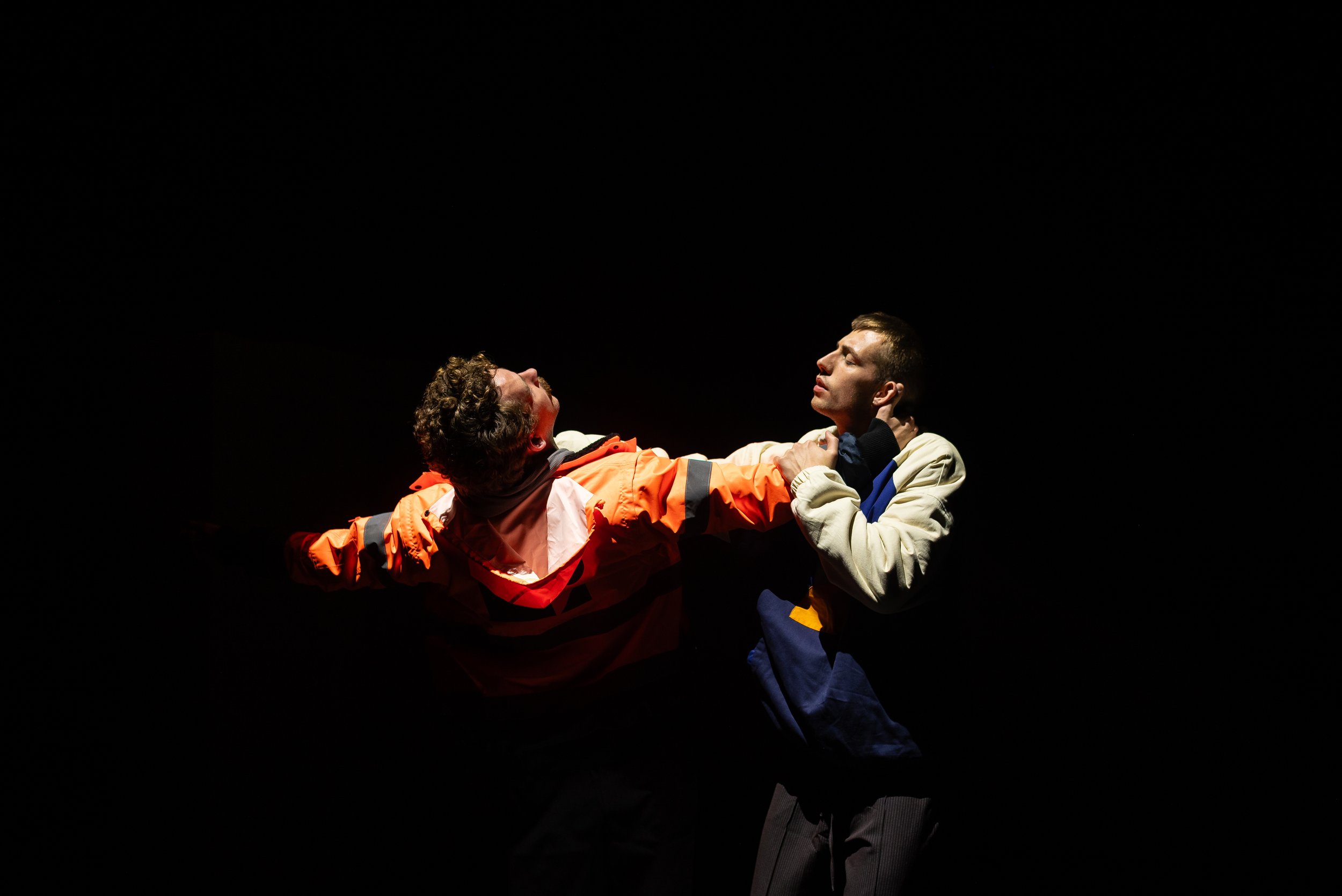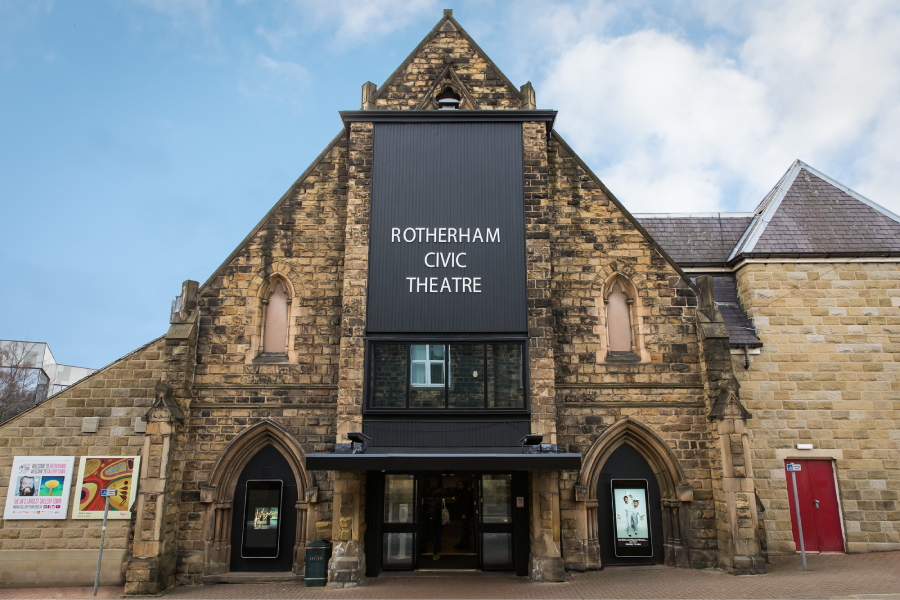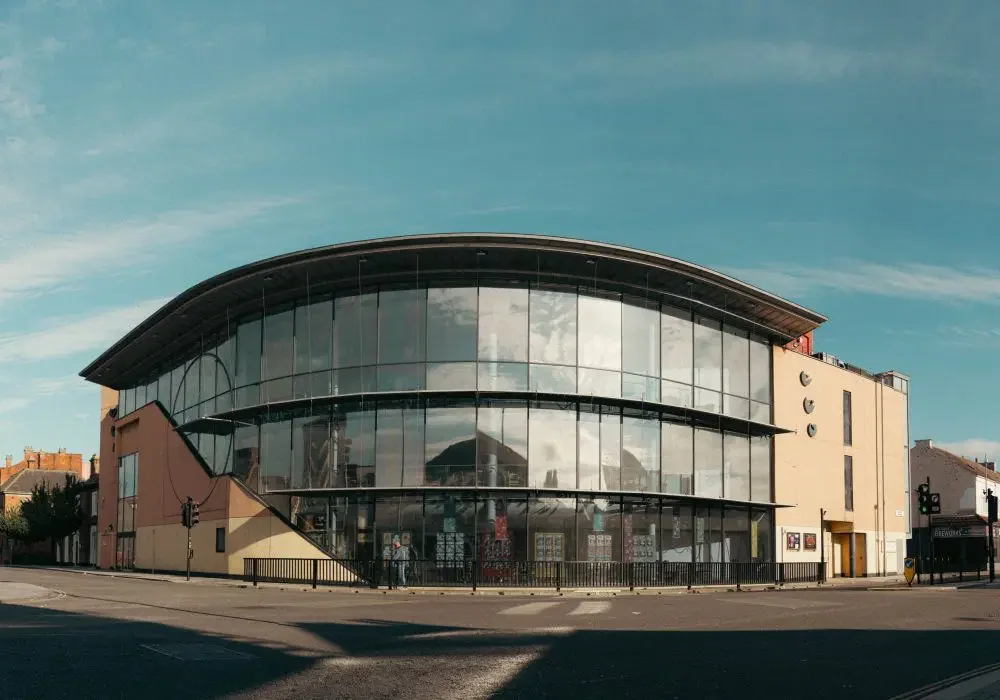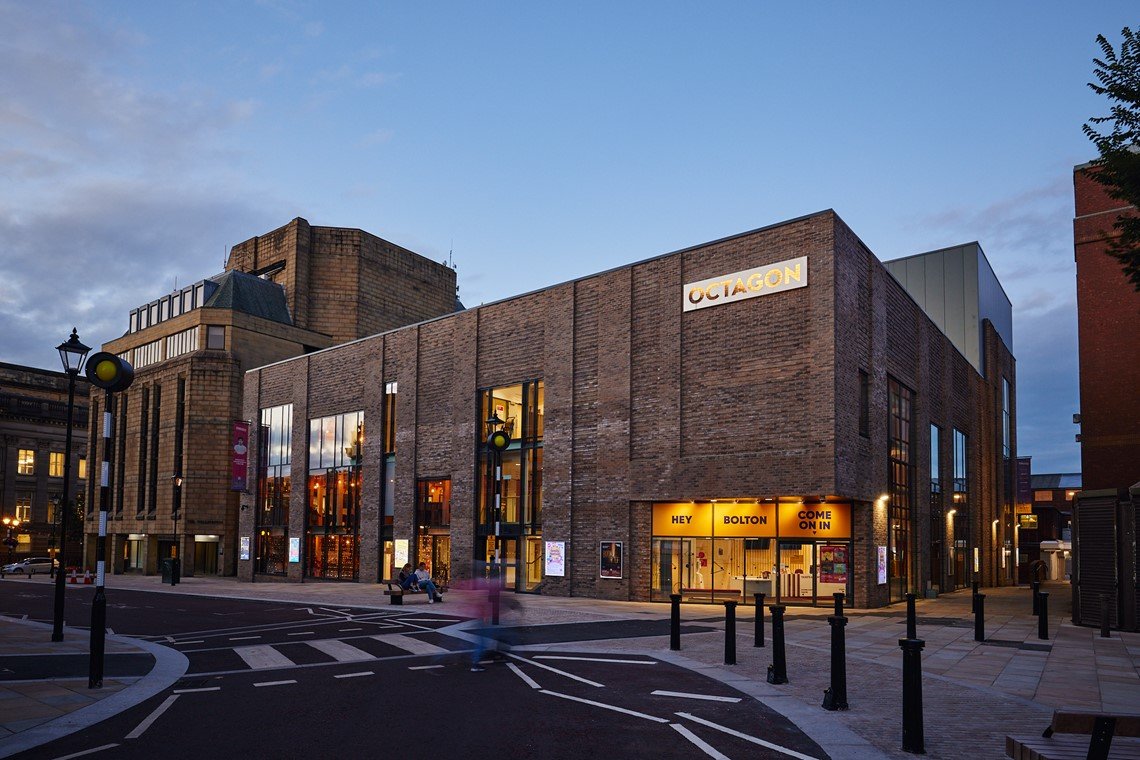About
Sunny Side is a dance theatre work that raises awareness of the mental health epidemic faced by young people across the UK.
Informed directly by the target audience (14-30yrs), the work addresses the real-life experiences shared with the company by over 1,500 young people across the UK. These stories have been collected via Northern Rascals' in-depth, co-creative practice in studios, schools and digitally over a 4 year period.
Fulfilling Northern Rascals’ commitment to creating socially impactful work that is driven directly by the demand of it's target audience; Sunny Side sets to be a cleverly current work that exists as a raw and authentic portrayal of the modern youth experience. It tackles sensitive and real issues such as depression and suicide, to implore its audience to recognise and validate the struggle that is commonplace in the lives of so many of our nations young people.
With 1 in 6 school-aged children suffering from a mental health problem & a 10-year delay between displaying symptoms and getting help (Office for National Statistics 2020), Sunny Side intends to add to the conversation, raise awareness and offer signposting for further support and help.
Synopsis
Sunny Side follows a central character, K, who is struggling through his adolescence in what should be a period of immense social and personal growth. His development has been stunted by a world on pause, where prospects are uncertain, emotional literacy is confused, and his sense of touch, support and identity has been lost. Faced with a lack of emotive language and an increasingly complex mental state, K grasps onto the past, present and the future in a bid to understand when things changed.
ANDYS MAN CLUB
Sunny Side tours in partnership with Andy’s Man Club, a men’s suicide prevention charity that provides free peer-to-peer support groups across the UK and online. Local facilitators attend each performance, hosting an information stand in the foyer or bar to share details about their local groups.
They are also available for confidential conversations before, during, and after the show, providing immediate support and guidance to any audience member who may need it. This partnership ensures the work not only raises awareness of men’s mental health but also offers tangible, local support for those affected by the themes in the show.
“On a personal note I wanted to say thank you for your efforts in bringing to the stage one of the bravest and most insightful pieces of theatre I’ve ever seen.”
Team
Creation & Direction Anna Holmes and Sam Ford
Playwright Anna Holmes
Collaborative Dance Artists Sam Ford, Ed Mitchell, Sophie Thomas
Original Collaborative Dance Artists Soul Roberts, Ed Mitchell, Sophie Thomas
Rehearsal Director Grace Ford
Digital Artist Aaron Howell
Set Design Caitlin Mawhinney
Lighting Design and Production Manager Barnaby Booth
Composer Wilfred Kimber
Dramaturg Geoff Colman
Production Manager (Assisting) Adam Goode
Voice Actors Lamin Touray, Brendan Barclay, Jonathan Aubrey Bentley, Anna Holmes
Marketing and Social Media Jess Rooney
Press Chloe Nelkin Consulting
Photographers Elly Welford, Katie Ho
Videographer Ben Williams
“As a man who has happened to find myself at points where I didn’t know what to do, many moments resonated with me and I dare say made me emotional. It’s made me think that it is OK to reach out for support.”
press
★★★★
A Youngish perspective
“A raw reflection on young men’s mental health, blending contemporary dance, theatre and spoken word to capture the struggle for connection in a world of isolation… the choreography is fluid and expressive, conveying its message powerfully and capturing the nuances of mental health in a way that’s both delicate and forceful.
★★★★
LIKE NOBODY’S WATCHING
“The dance here is lyrical and dynamic, performed by our trio with feeling and finesse… It is a slick production and an easy-to-follow meditation on young men’s mental health.”
Like Nobody’s Watching
★★★★
THEATRE AND TONIC
“Highlights the struggles that so many young men face universally. It’s clear themes of isolation, seeking healthy male friendships and peer-based solidarity are clear and invigorating. I urge any person from 16-80 to watch this show as its message needs to be heard by all.”
★★★★
THE REVIEWS HUB
“A powerful and moving exploration through contemporary dance into the experience of male youth… Compelling and relatable… This is a powerful, relatable and urgently told narrative, is at times almost unbearable, but ultimately is a timely and poignant reminder to check in on our boys.”
THE GUARDIAN
“Arresting show from Northern Rascals charts the growing distance between two young men. Sunny Side shows how we never grow out of that need to be held.”
BRITISH THEATRE GUIDE
“A riveting piece of dance... includes taut and beautiful poetry... wonderful. Northern Rascals is part of our vitally important network of regionally based companies.”
LEEDS LIVING
“Tackles youth, masculinity and mental health with ambition, delivering moments of genuine brilliance… the trio of dancers are mesmerising to watch… masterfully executed… nothing short of breathtaking… raw and exquisitely choreographed.”
the 2026 tour: demand
We are planning a 5-date Northern tour, including visits to 3 priority places. To ensure relevance, Northern Rascals targets specific areas with prevalent mental health challenges informed by local statistics and postcode data.
Stephen Joseph Theatre, Scarborough
Scarborough has one of the highest suicide rates in Yorkshire & Humber, with rates above the national average.
Scarborough experiences higher-than-average rates of unemployment, housing insecurity, and financial strain, all contributing to psychological stress (Mind Scarborough, Whitby and Ryedale)
When the male mental health group Andy's Man Club held its first group in Scarborough in 2020, there was a record breaking turnout for the first group, with 37 men attending (The Scarborough News)
The region also faces limited cultural provision in contemporary dance, making access to high-quality touring work scarce.
Rotherham Theatres
Rotherham is in the top 20% most deprived local authorities in England (IMD 2019).
Male suicide rates in South Yorkshire are significantly higher than the national average, with men under 35 particularly affected.
Ian Watson, lead facilitator at the Andy's Man Club in Maltby, Rotherham, says many men still do not talk about their feelings because they felt they "should be able to 'man up' and get on with things".
Local partners report rising demand for mental health outreach with young men.
ARC Stockton
Stockton is ranked in the top 10% most deprived areas nationally (IMD 2019).
Tees Valley suicide rates are consistently above the England average, with young men most at risk.
ARC already has strong mental health & community programmes, but there is unmet demand for cultural work targeting young men’s wellbeing.
Octagon Bolton
Bolton is in the top 15% of most deprived local authorities nationally.
Suicide is the leading cause of death for men under 50 in Greater Manchester.
Health inequalities are pronounced: men in Bolton have a life expectancy nearly 10 years lower than those in affluent areas of England.
NSCD, Leeds
Leeds reports some of the highest rates of male suicide in Yorkshire & Humber, especially among young men aged 20–34.
Yorkshire & Humber overall records the highest male suicide rate in the UK (ONS, 2023).
Engagement with local young dancers (FE/HE and CAT schemes) has highlighted a need for safe, creative spaces to explore mental health themes.
NORTHERN RASCALS: EXAMPLE tour AUDIENCE (2025)
The Place, London
Lakeside Arts, Nottingham
Leeds Playhouse
PAVILION DANCE SOUTH WEST
NORTHERN RASCALS ONLINE AUDIENCE
Instagram is our most popular social media platform (4,215 audiences)
AGE
location
gender
Between 2023 and 2025, Sunny Side’s social media presence grew dramatically, with Facebook reach quadrupling and Instagram reach increasing nearly 15-fold. Instagram in particular now drives great awareness and engagement.
DATA:
During Sunny Side's 2023 development and pilot tour (22 May 23 - 10 Oct 23), our Facebook reach was 40,132 people, with 841 content interactions. During the same period, on Instagram our reach was 23,386 people.
During the 2025 Sunny Side development and tour (27 March - 14 Oct to date), our Facebook reach was 168,615 people, with 986 content interactions. On Instagram, our reach was 347,060 people and we had 7,400 content interactions.
Key audience development Objectives (2026 tour)
To widen impact and awareness of the company,the show and the important message behind it.
Engage new audiences - particularly young people from underserved communities and areas with high mental health risks and those who are new to contemporary dance.
Diversify audience representation: engage a broad demographic across different regions with tailored approaches for specific locations.
Deepen engagement: Support young people in developing their creative skills through participatory activities
To convert online audiences to in-person attendance and vice versa: eg Sunny Side’s online content drives people to the live show, and the other way around.
To engage with male audiences of all ages who wouldn’t usually see contemporary dance as “for them”, and to spark discussions about mental health
-
People aged 14-40 engaged in the arts in activity areas; to buy a ticket for the show, sign up to workshops, follow us on social media and sign up to NR’s newsletter.
Potential barriers to engagement:
Not aware of the company’s work
Standing out amongst theatres’ programme, bigger well-known titles
Cost of tickets
Transport to venue
Cost of living
Events or workshops that don’t align with school, work, or other commitments
One-off interactions make it harder to engage long-term
Strategies to engage:
Venue campaigns and agreed marketing contra: emails to venues’ database of previous dance bookers, brochure entries, print front of house and distributed locally
Organic and paid social media campaigns including Instagram takeovers
High quality marketing asset pack provided to venues and local press
Outreach to local community; social media community groups, emails to local youth clubs, dance and theatre groups.
Accessible pricing and young persons discounts wherever possible
Community dance and place-based workshops exploring the themes of Sunny Side
Tailor engagement activities to local needs
School outreach programme, including a physical workshop, Q&A facilitated discussions
Post-show discussions to offer insights, support and signpost to resources
-
Young People on tour aged 14-30 from from varied Index of Multiple Deprivation areas and from high mental health risk areas and priority places.
Potential barriers to engagement:
Lack of financial independence
Mental health struggles; anxiety & depression preventing from booking / taking part
Cultural disconnect; feeling “it’s not for me”
Not typically exposed to such opportunities in their daily environments
Other things taking priority, eg caring responsibilities / work
Fear of the unknown
Cultural or linguistic barriers
Strategies to engage:
Free or subsidised tickets
Partner with local schools, theatres and trusted youth clubs and mental health charities to facilitate their attendance and participation.
Localised marketing in community spaces and social media campaigns that speak directly to the interests and issues of YP in these areas
Use influencers or local youth leaders to champion the show and opportunity to take part
-
Men of all ages who have been affected by mental health challenges, personally or second hand.
Potential barriers to engagement:
Seeing contemporary dance or theatre as “not for me”
The themes in the show could be viewed as emotionally triggering
Perceived lack of community – If they don’t see other men attending, they may be reluctant to go
Fear of vulnerability – Attending a show about emotions and mental wellbeing may feel exposing or uncomfortable
Stereotypes or preconceptions that dance is primarily for women or lacks masculine representation
Strategies to engage:
Lead with story and relevance, not art form – promote it as a powerful story about men, resilience, and connection, rather than “a contemporary dance show.”
Use plain, relatable language – avoid jargon like “physical theatre” or “contemporary movement.”
Emphasise universality – frame mental health as a shared human experience, not a niche issue.
Use of language like “raw,” “honest,” “gritty,” “real stories,” can counter perceptions of softness.
Include male voices – testimonials, quotes, or short videos from male audience members, participants, or artists.
Show male performers in strong, expressive visuals
Partner with local men’s groups, sports clubs, or mental health charities to reach new audiences.
Collaborate with influencers or ambassadors who speak openly about men’s wellbeing.
Target digital ads toward male interest areas (e.g. sports, gaming, film, fitness).
Offer “bring a mate” or group booking discounts to encourage social attendance.
PLACE SPECIFIC CONSIDERATIONS
SCARBOROUGH
Context:
High male suicide rates and clear local appetite for men’s mental health initiatives (e.g. Andy’s Man Club record turnout).
Limited access to contemporary dance.
Financial strain and unemployment may limit disposable income for arts attendance.
Marketing Considerations:
Frame the show as community-relevant – a story that reflects real struggles men in Scarborough face, rather than abstract “dance theatre.”
Partner with Andy’s Man Club (Scarborough group) for outreach, social content, or group attendance offers.
Emphasise accessibility and affordability – highlight concessions, or relaxed performance atmosphere.
Use local storytelling – feature quotes or short films from local men discussing why open conversations matter.
Position as a rare opportunity – highlight the scarcity of high-quality dance theatre in Scarborough to create a sense of occasion.
ROTHERHAM THEATRES
Context:
High deprivation and suicide rates; stigma around men expressing emotion.
Local facilitators note persistent barriers due to “man up” culture.
Demand for mental health outreach with young men.
Marketing Considerations:
Use language around courage and strength, not vulnerability — “real stories of resilience,” “bravery in the everyday.”
Partner with local men’s wellbeing groups (Andy’s Man Club Maltby, RotherHive, community sports clubs).
Offer group tickets or youth night deals for college-age men and community groups.
Co-create marketing content with local ambassadors (e.g. youth leaders, grassroots mentors) to ensure authenticity.
Engage schools and colleges through workshops that connect creativity and wellbeing, building a bridge to attendance.
ARC Stockton
Context:
Deep-rooted deprivation, high suicide rates, particularly among young men.
ARC already active in mental health and community engagement.
Unmet demand for cultural work focused on male wellbeing.
Marketing Considerations:
Align the show with ARC’s existing creative engagement programmes – position as a natural extension of their offer with Displace Yourself Theatre.
Collaborate with ARC’s trusted community partners to reach men already engaged in wellbeing work.
Highlight hope and community connection in messaging – “shared experience,” “collective strength.”
Offer pre/post-show conversations co-facilitated by ARC’s community team to deepen engagement.
OCTAGON BOLTON
Context:
High deprivation and major health inequalities.
Suicide leading cause of death for men under 50.
Octagon has strong community reach and trusted local presence.
Marketing Considerations:
Emphasise the Octagon’s role as a welcoming, safe local hub, not a formal theatre space.
Work with local men’s mental health charities (e.g. H.A.V.E, Start Inspiring Minds) to co-promote or run linked discussions.
Use tone that feels grounded and working-class relatable – avoid overly polished or abstract visuals.
Highlight the human story, not the art form – “a powerful story told through movement, about what happens when we bottle things up.”
Leverage Octagon’s community networks to reach non-traditional audiences (workplaces, recovery groups, boxing gyms).
NSCD, LEEDS
Context:
High male suicide rates among young men.
Existing dance and creative education infrastructure (FE/HE, CAT schemes).
Expressed need for safe, creative spaces to explore mental health.
Marketing Considerations:
Target young male dancers and students as ambassadors – invite them to see the work as part of their training and wellbeing.
Use NSCD’s digital and educational networks to promote the show through peers and alumni.
Host a post-show discussion or workshop about mental health in dance training.
Emphasise professional inspiration – seeing male dancers perform complex emotional material can challenge stigma within training environments.
Frame the show as part of a larger movement to make dance a space where men’s stories are seen and valued.
SUCCESS MEASURES
Audience & Attendance
Male audience proportion: target 25–30% of total attendees.
New-to-dance attendees: at least 10% of audience.
Venue capacity: aim for an average of 80% in established dance venues.
Digital Engagement & Awareness
Facebook reach: target 180,000–200,000 people (up from 168,615 in 2025).
Facebook content interactions: target 1,200+ interactions (up from 986).
Instagram reach: target 360,000–400,000 people (up from 347,060).
Instagram content interactions: target 8,500+ interactions (up from 7,400).
Male followers: increase from 23.5% → 30–32%.
Overall social media growth: increase total followers by 300+ across platforms.
Impact on Attitudes & Conversations
Emotional connection: male audiences report feeling positively impacted by the show.Prompted reflection/discussion: male audiences say the show encouraged thinking or conversation about men’s mental health.Qualitative feedback: collect at least 10 testimonials (quotes, videos) demonstrating audience connection to the themes.
Community & Partnerships
Regional partnerships: collaborate with at least one male-focused mental health or community group per region (e.g., Andy’s Man Club, sports clubs, youth organisations).
Outreach participation: engage a minimum of 50 participants in workshops, pre/post-show discussions, or related activities.
Press/media coverage: secure at least 3 features highlighting the tour’s focus on men’s wellbeing and community relevance.
Learning & Legacy
Audience report: produce a comprehensive report summarising demographics, motivations, male engagement, and digital metrics.
Venue confidence: support venues in building confidence to reach male and wellbeing-focused audiences for future programming.
